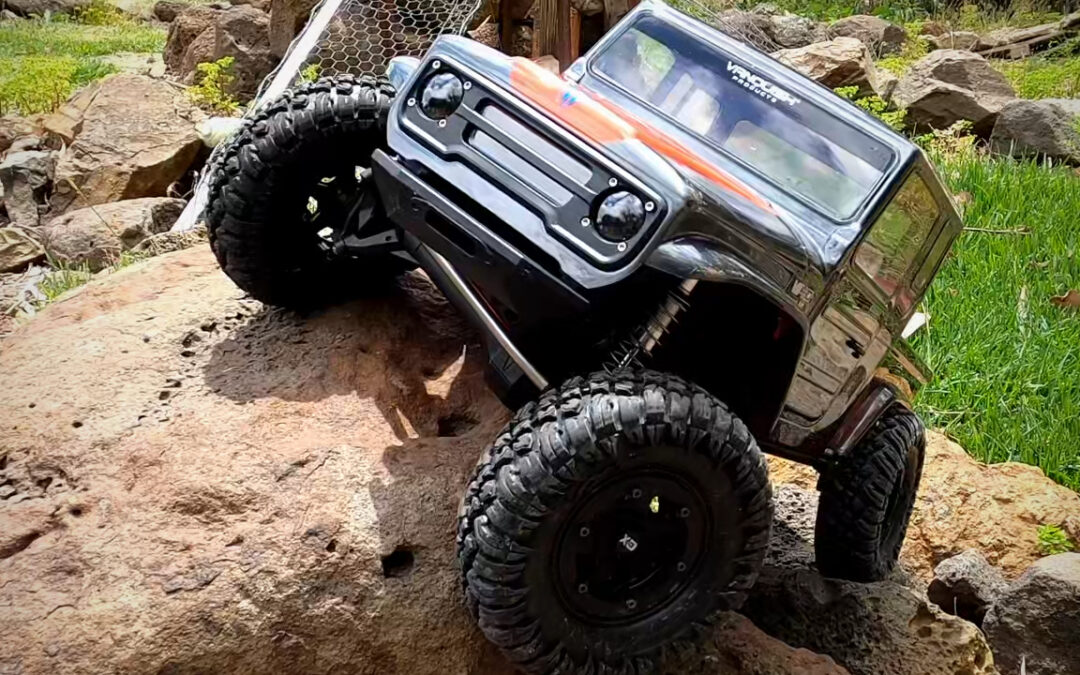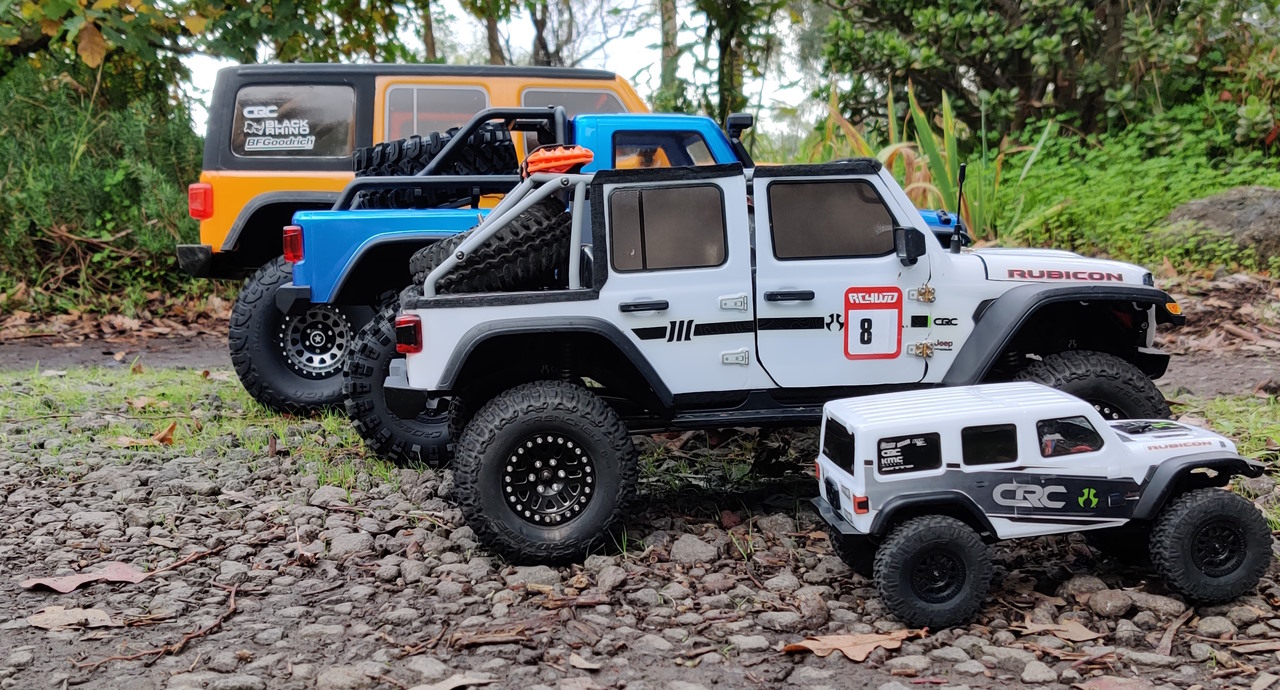Packed with features under a gorgeous body, the Vanquish VS4-10 Phoenix is an intriguing kit. On paper, this looks to be an impressive RC crawler and an interesting trail truck, albeit with some drawbacks. Read on to find how it performs, how it stacks up to the competition, and what (if anything) needs improvement.
Find our video review here (or embedded at the end of the article).
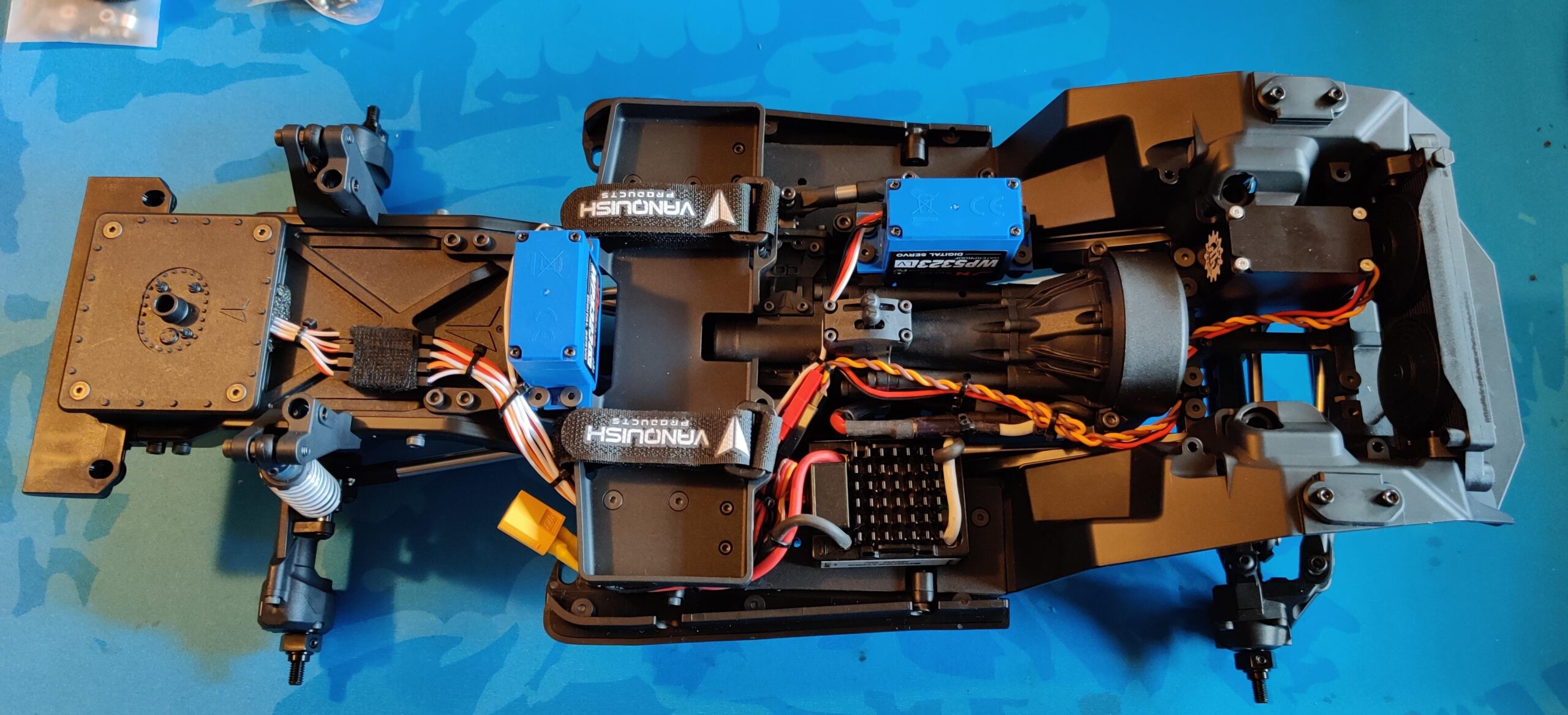
What’s So Special About It?
Vanquish Products have been known for their quality metal drive-train components over the years. In the last decade, VP have released numerous RC crawlers at the more expensive end of RC crawler kits, but all of premium build quality. Uncompromising, durable and high performance all come to mind when one thinks of a Vanquish Products rig.
The internet has been rightfully buzzing with the release of the VS4-10 Phoenix, which diverges from its stablemates in that it’s a little more than half the price and has even more features than its counterparts! The catch is that the axles and transmission housings are plastic. It’s a very nice quality plastic with reinforcement and durability clearly designed in, but it’s still plastic.
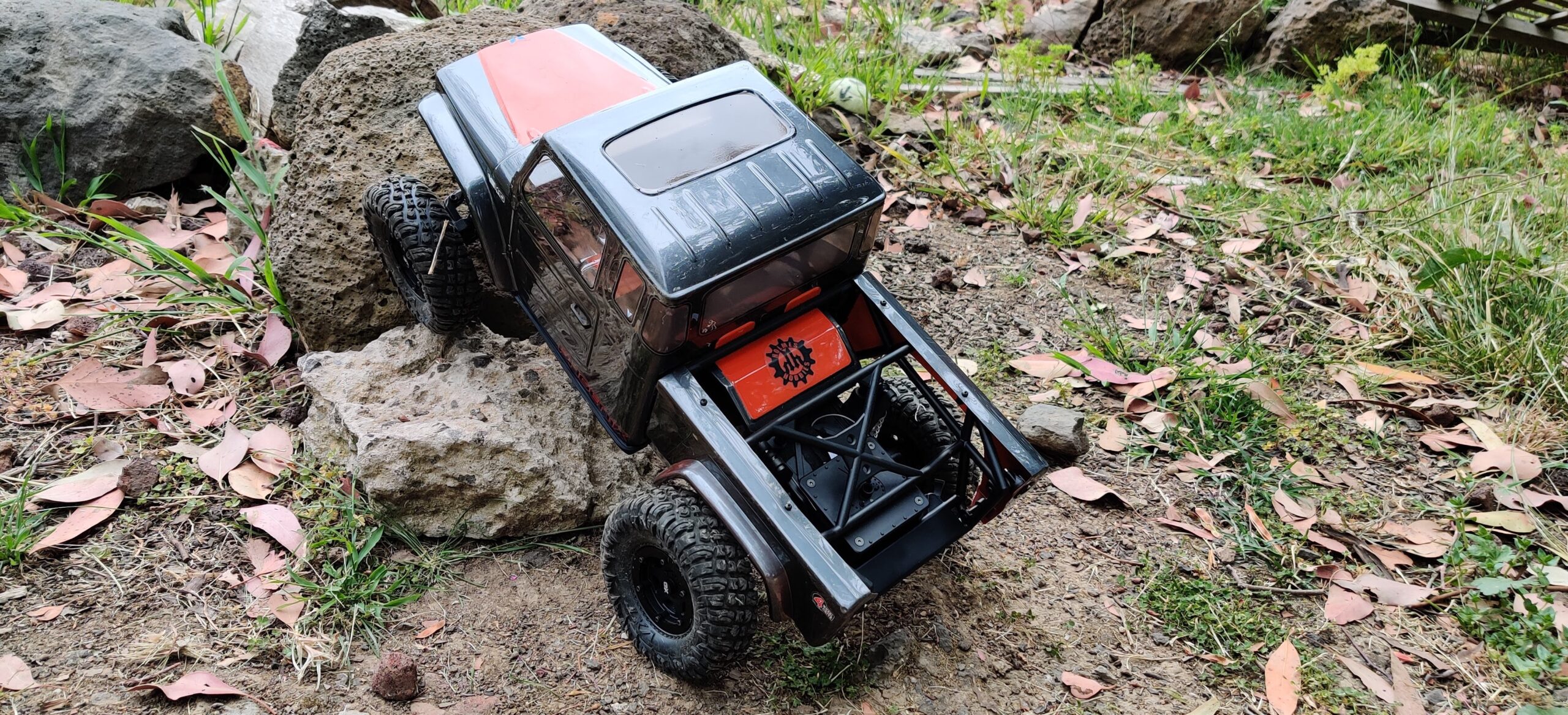
VFD Twin Transmission
Plastics aside, the big news with the Vanquish VS4-10 Phoenix is the VFD Twin Transmission. So called because this transmission allows independent gear selection for front and rear axles. With the front, you have on-the-fly overdrive shifting from 6.5% to free-wheeling to 33%. On the rear, you have a similar design to the well-known and trusted Hurtz DIG unit, allowing shifting from engaged to free-wheeling to DIG (locked, no rotation).
There are grub screws at four locations above the dual shifting arms, which allow you to lock the transmission in a variety of ways instead of needing to install servos. For most folks, keeping the DIG would be a common decision, so at least that rear servo would be worth installing. But for the front, 6.5% overdrive may be an acceptable gearing to keep, foregoing the shifting option to select free-wheeling or 33% OD from the radio. It’s a simple case of setting the arm manually to the correct position and tightening the grub screw down onto the arm, locking it in place. Less electronics, less weight, and still the advantage of transmission-set overdrive – it’s good to have these options!
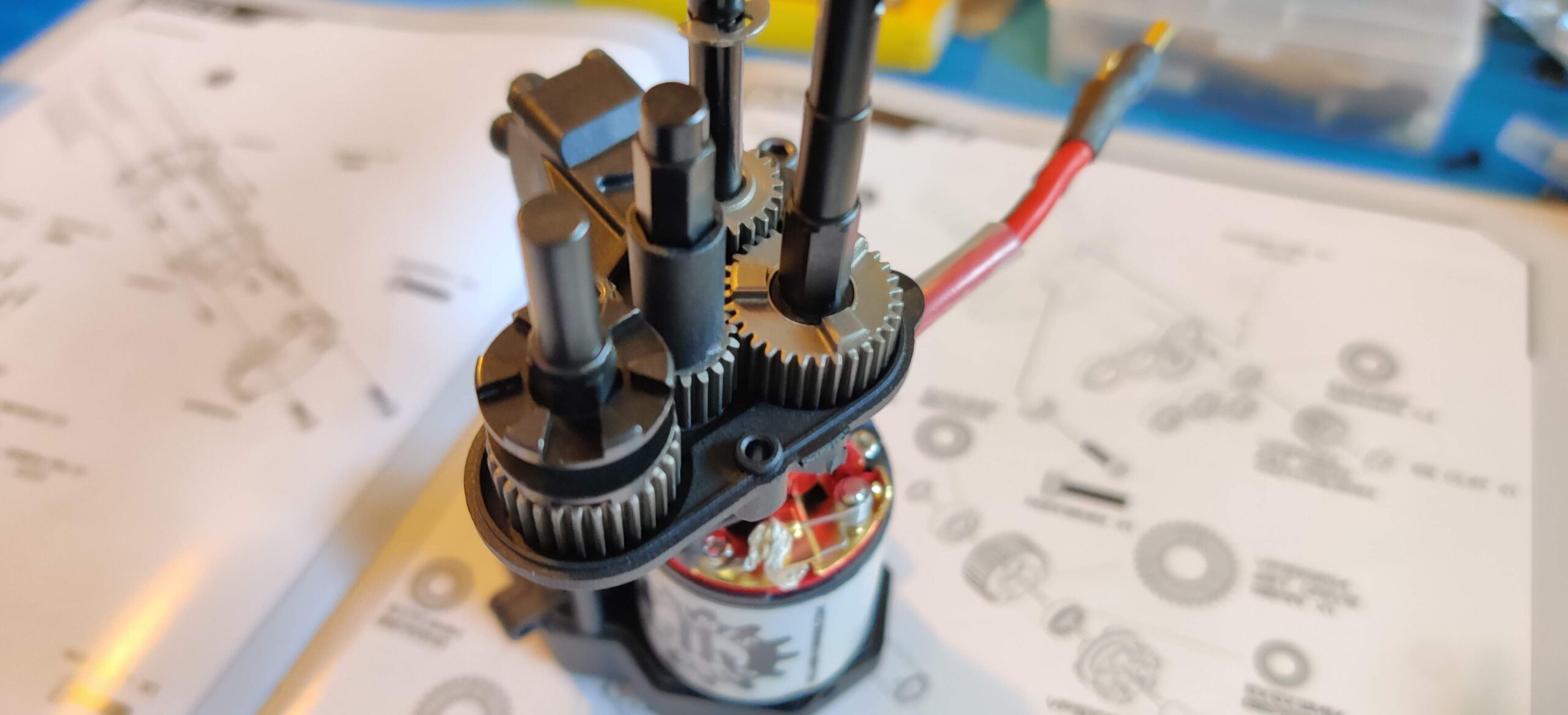
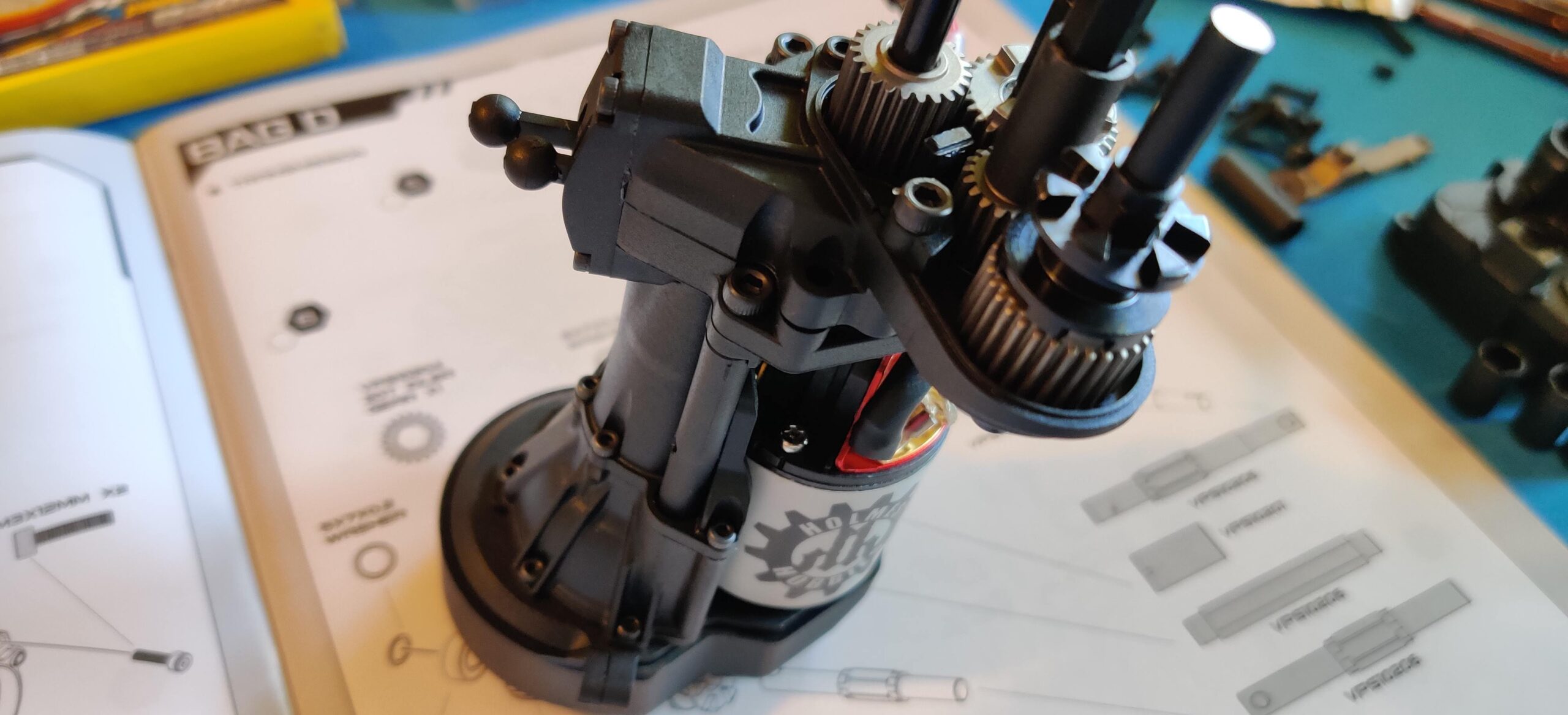
Awesome Axles
The Vanquish Products F10 Portal Axle Housings comprise the running gear, with an offset front and centered rear diff pumpkin. There are brass reinforcement tubes within each end for strength and centre of gravity improvement, and universal front axle shafts with a 49 degree steering angle. Yes, the housings are plastic, but on paper these details suggest high performance.
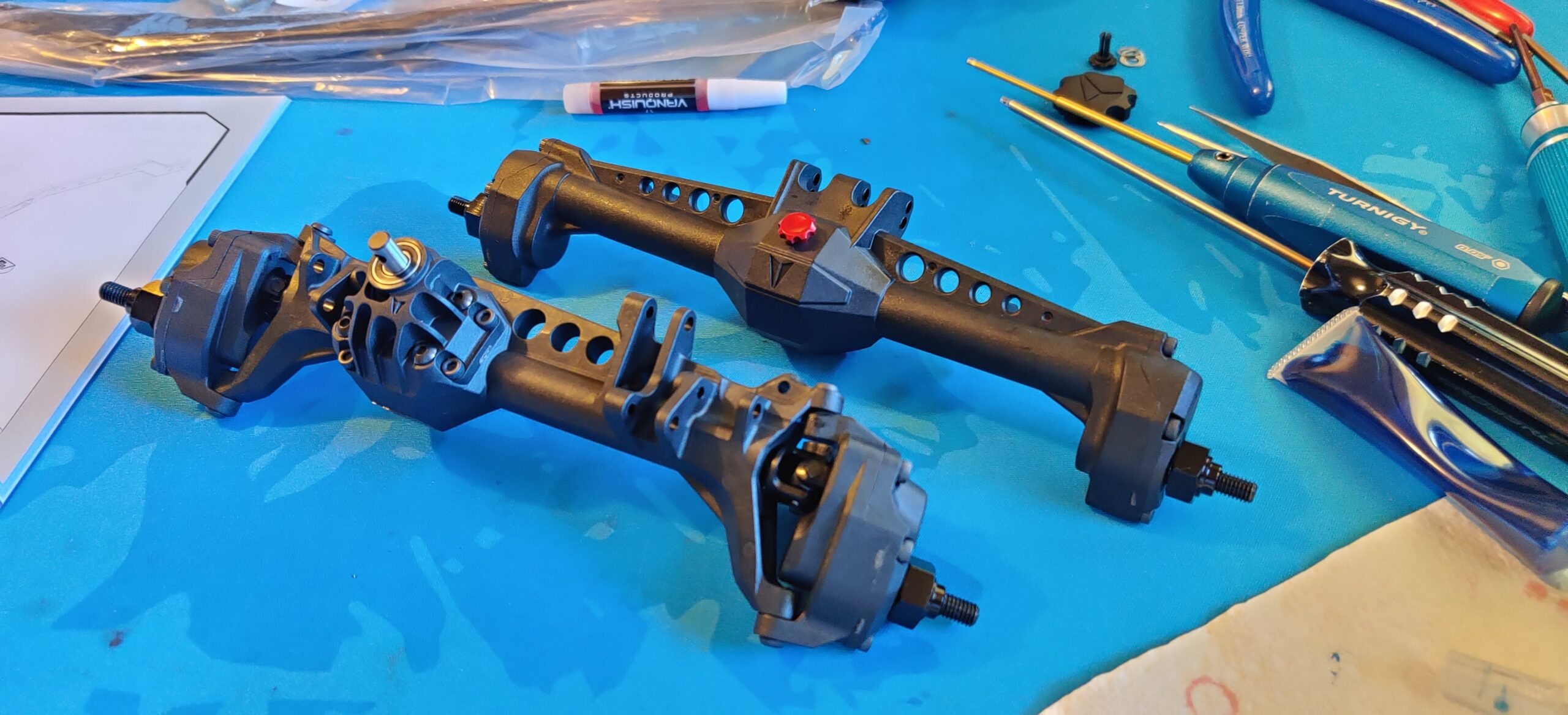
Great Gears
Further, all gears in the vehicle are machined steel. They are strong enough to take brushless power from a 540 motor, should you deicide to amp up the output. With the adjustable front overdrive, Hurtz-style DIG, machined gears and hardened chromoly shafts, strength and durability shouldn’t be a problem. Full ball-bearing transmission, extended skid plate protection and sintered shift arms with brass pivot shift bushings should mean reliability. The spur and steel pinion are 32P, so they should be strong too. Looking at the ‘go’ parts, this is a truly well-appointed vehicle. It should be a killer on the rocks and on the trails, right?
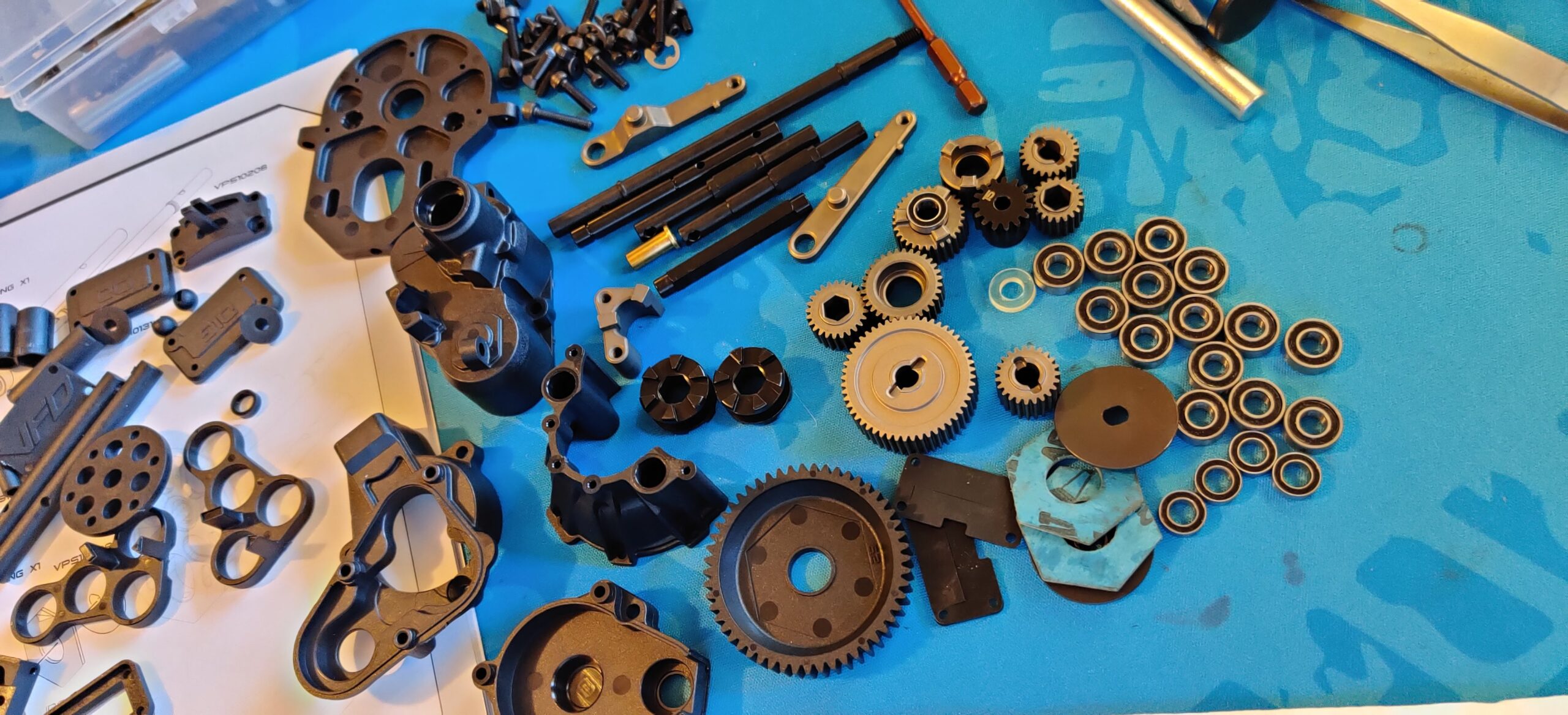
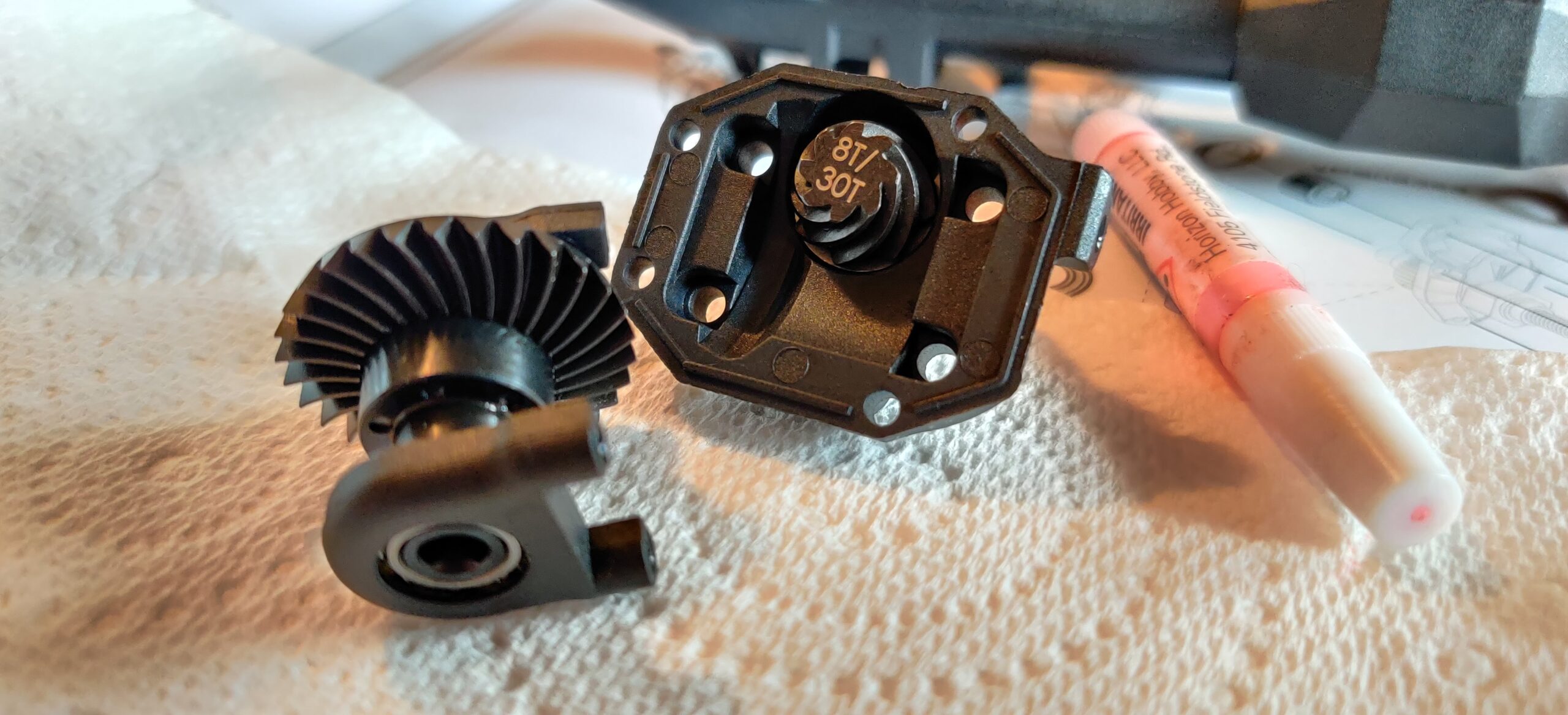
What’s In The Box?
The box itself is attractive. As a long-time fan of Scale Builder’s Guild (the YouTube channel and the web forum), it’s a blast to see the SBG logo on the box artwork. Very cool! Opening it up, you’ll find a clear polycarbonate body, ready for paint of your own design. There are five pieces of polycarbonate, with rear wheel guards, the main body, an interior mold, a dash piece ready for stickers. There’s a good variety in the quality sticker sheets.
As well as the welcome interior plastic scale pieces, there are molded front inner fenders and an interesting, plastic scale radiator mount. The plastic bar-work is flexible and strong. There’s a premium-feeling set of steel C-channel frame rails. I appreciated the clearly-labelled parts bags and a quality set of tools which were also included. You’ll find basic fluids are included and the beadlock wheels are complex but easy to build. Lastly, there are pretty S8E 8mm bore scale shocks with bleed valves and dual X-rings. So far, so good. Really, really good!
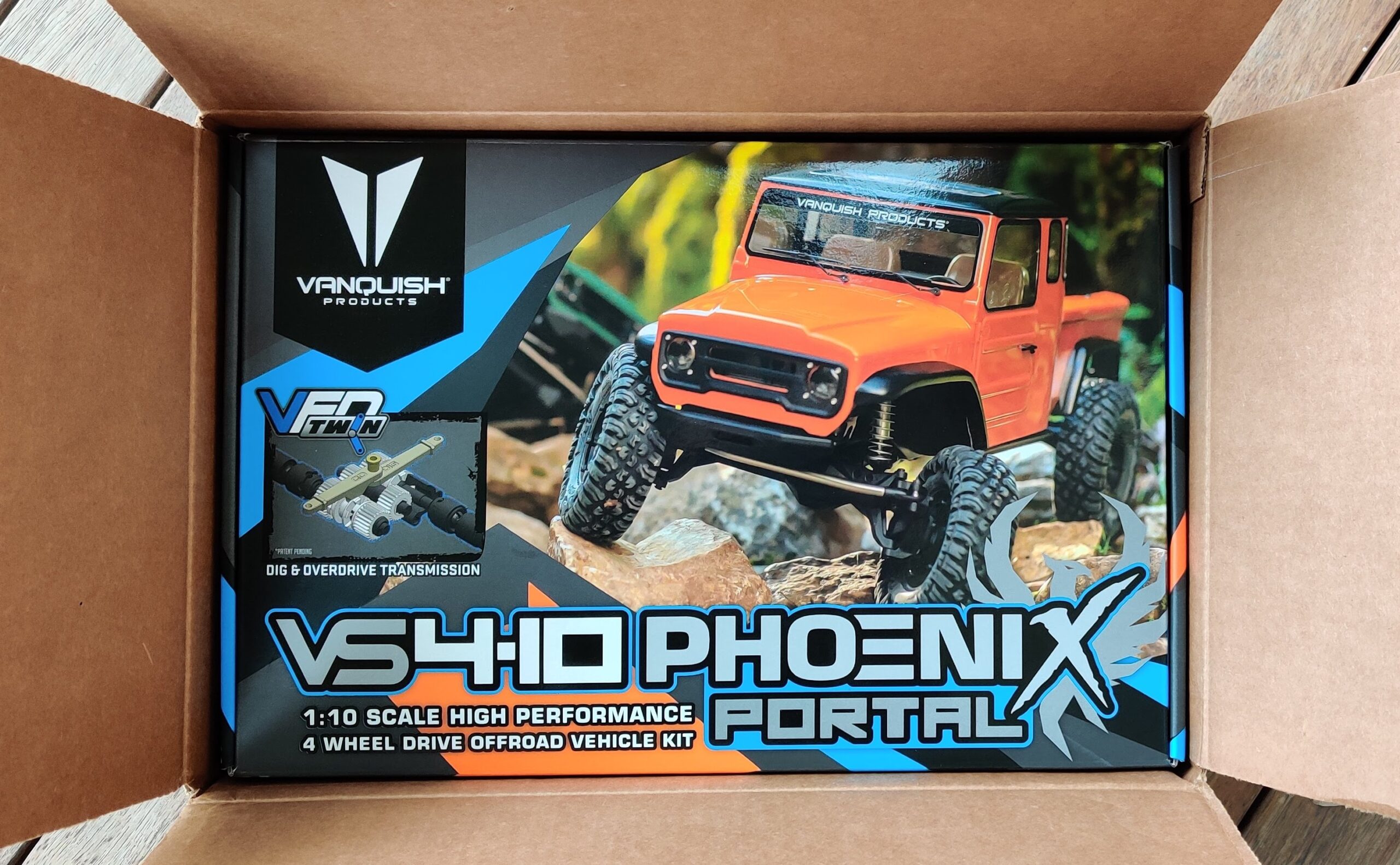
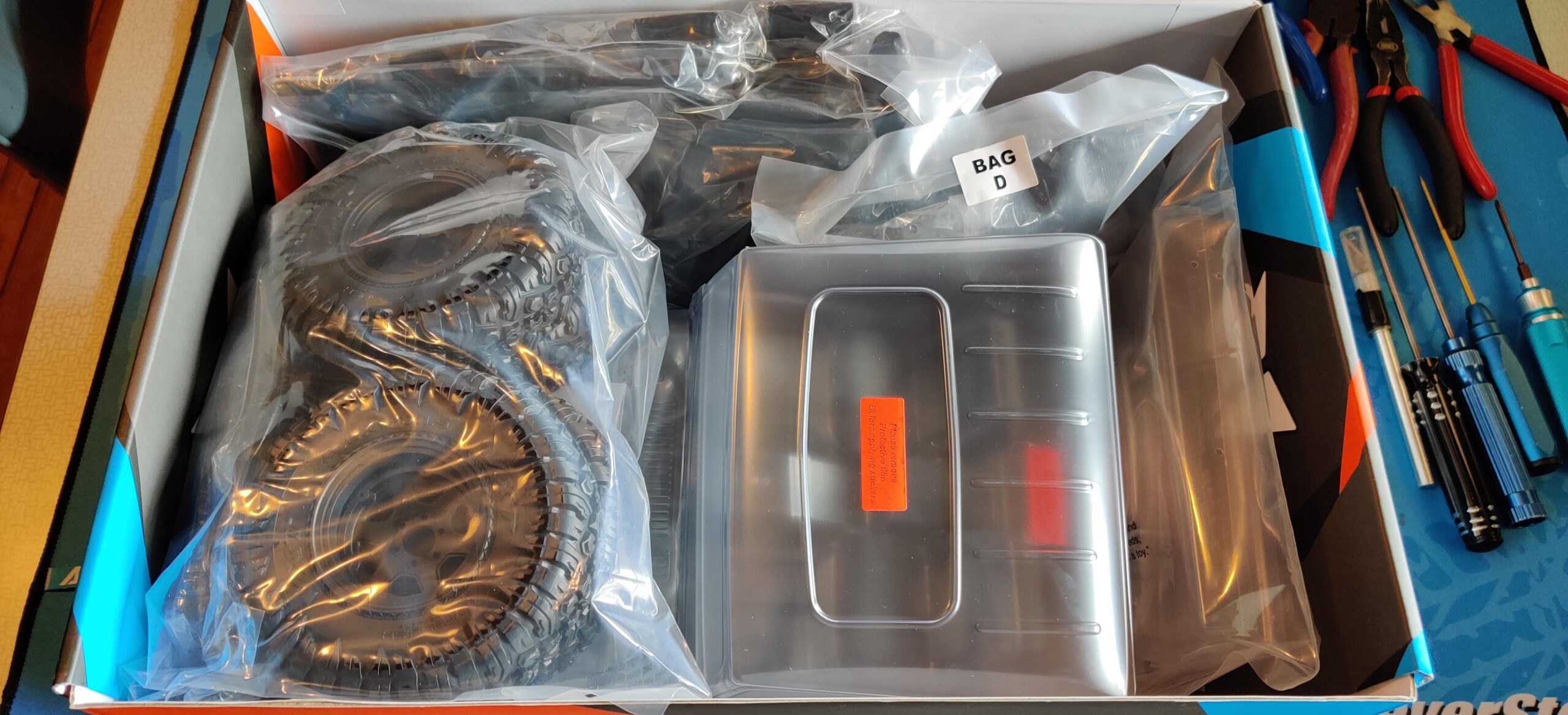
Vanquish VS4-10 Phoenix Kit Build
As far as kit builds go, the experience with the Vanquish VS4-10 Phoenix was a mixed bag. There is a delightfully well-appointed set of braces, mounts and fixings, all either of metal or a lightweight but rigid plastic. The chassis is solid – really, really solid – and as the drive train comes together, it’s clear this is a quality model. The end product very nice indeed and had a premium feel from start to finish.
However, my personal build was tarnished by a few problems. I’ll expand on these below, but in short, there were some errors and omissions in the manual that meant I had to use significant time to try to work out myself, which I found challenging. A few changes to the manual could really have helped keep the time expenditure low and enjoyment high!
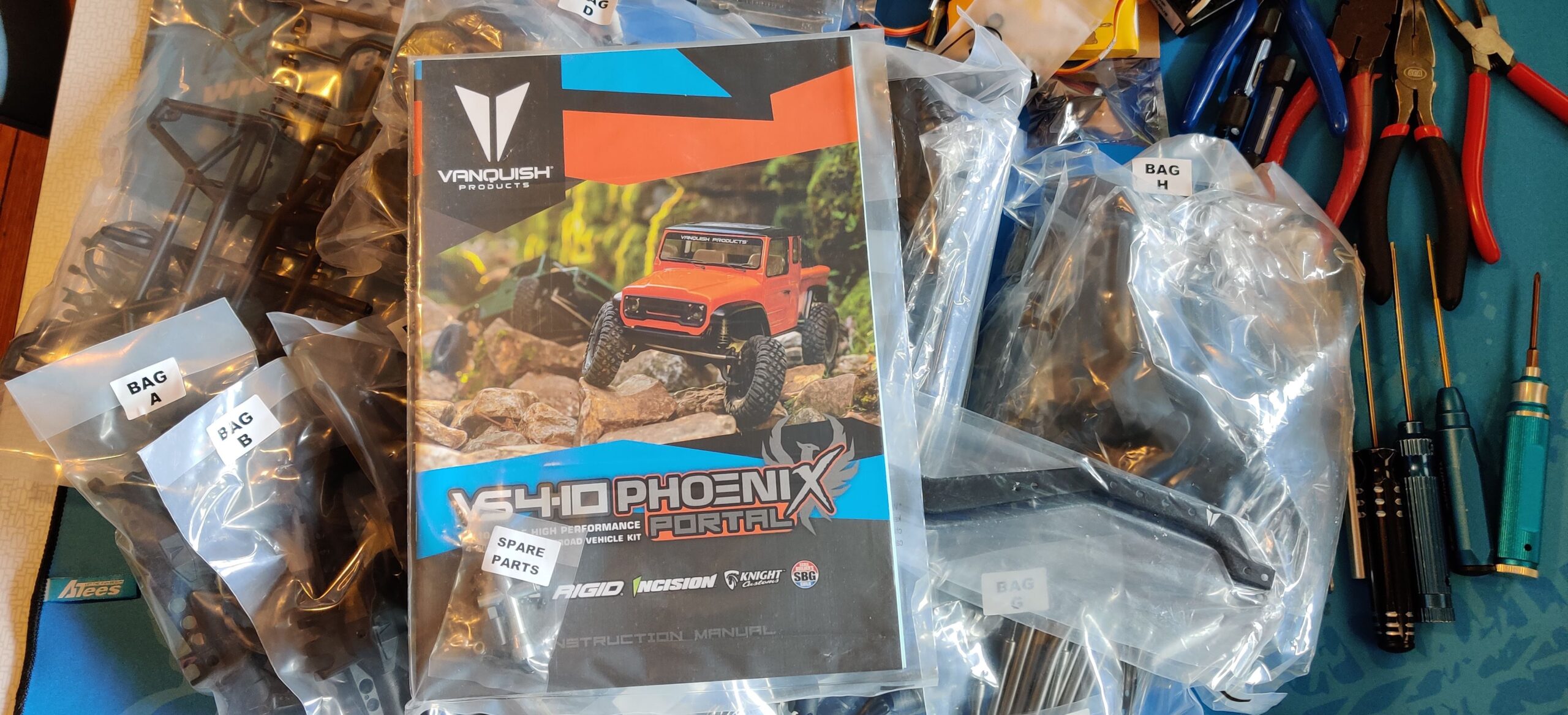
Instructions Need Work
The manual was erroneous or incomplete in a few areas. Mostly nothing serious, but one section in particular resulted in my having to revisit the transmission build no less than five times! I’m an experienced modeler and while I know others may be better equipped to visualise what goes where and why, I feel it shouldn’t have been a puzzle to find the problem. My issue was with the transmission and the installation of an E-clip that wasn’t shown in the diagrams (circled below – it should be shown there from a previous step that was unclear).
Vanquish Products has released updated manual versions since the original version went to print (though the E-clip diagram correction was still missing, at time of writing in Dec 2021). Updates are good, but I didn’t find this information until after I’d finally worked out my problem! For more context, I cover the nature of the problem in the review video, at the end of this article.
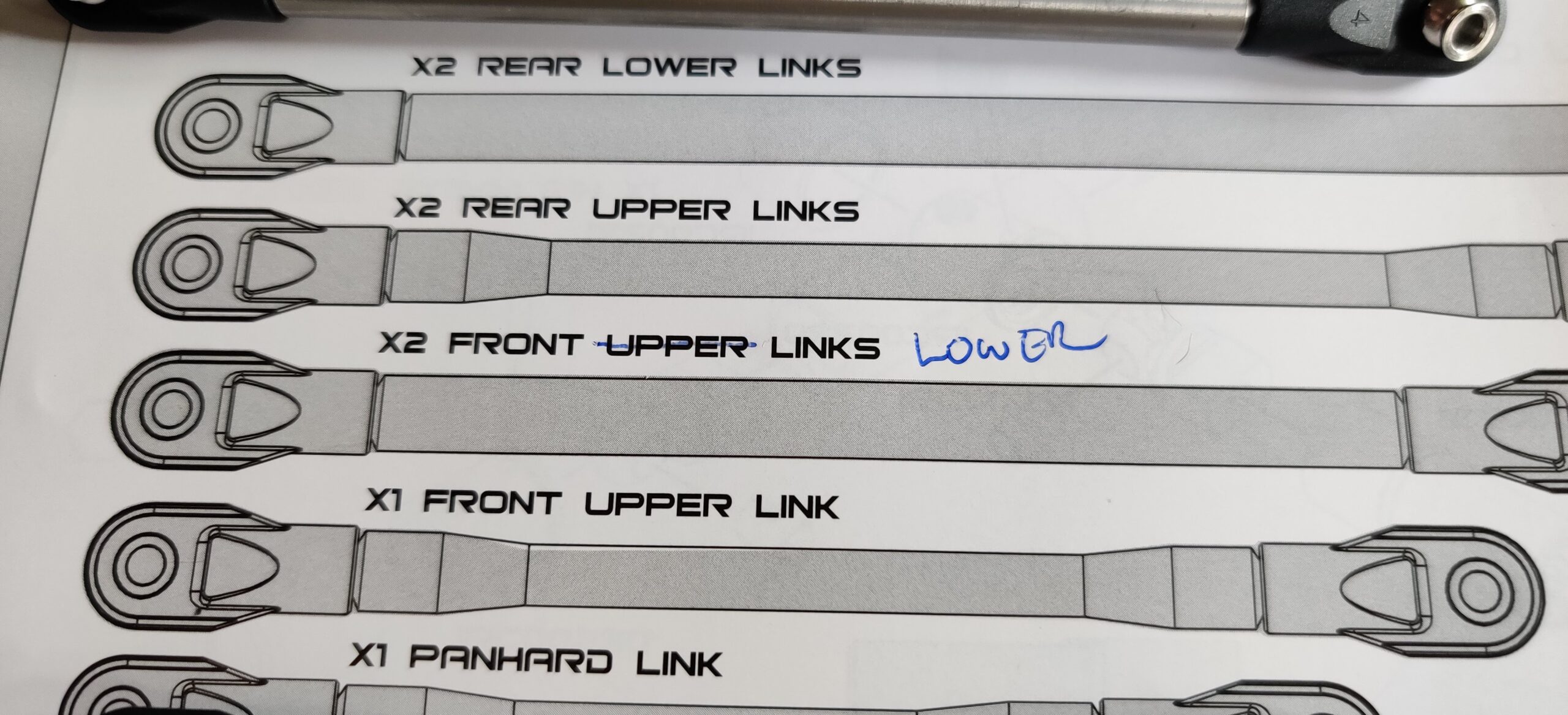
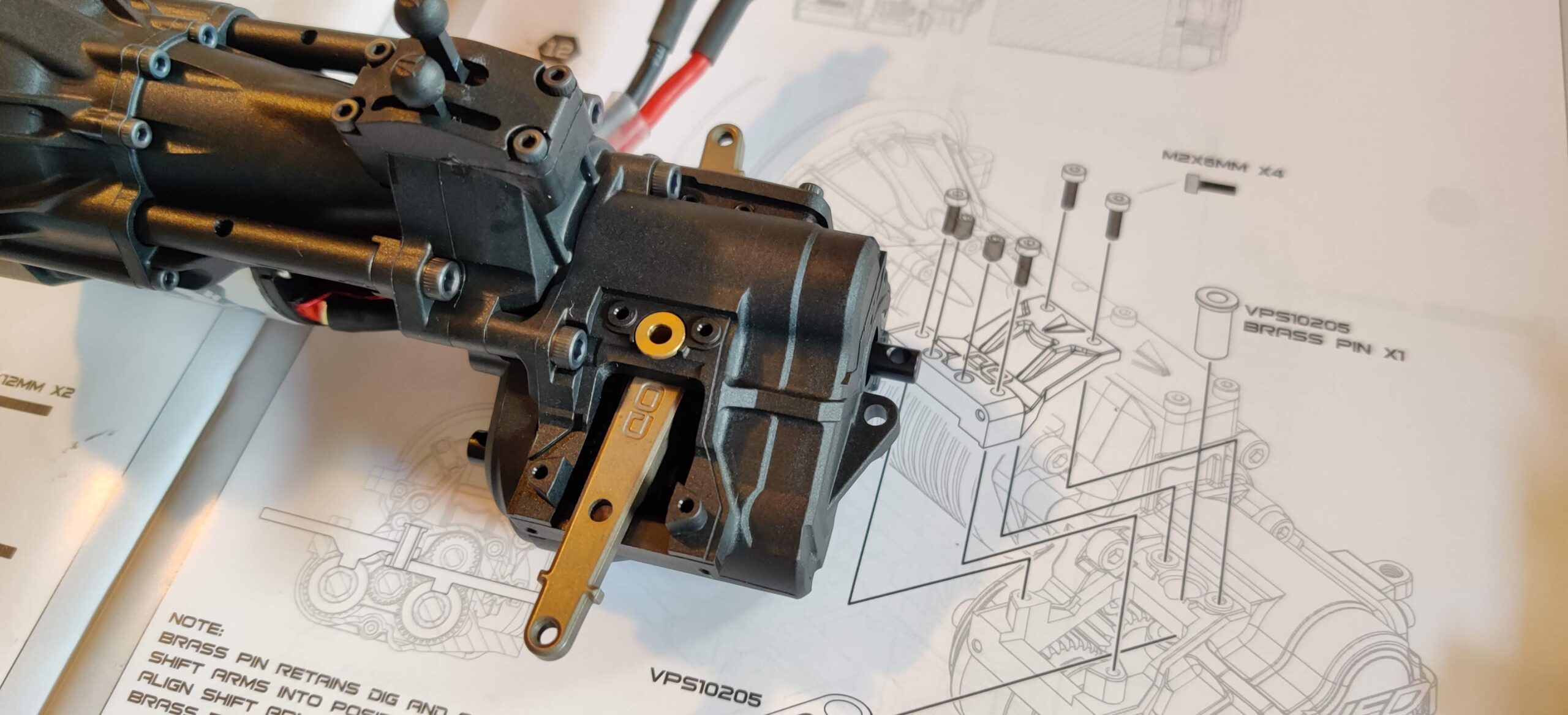
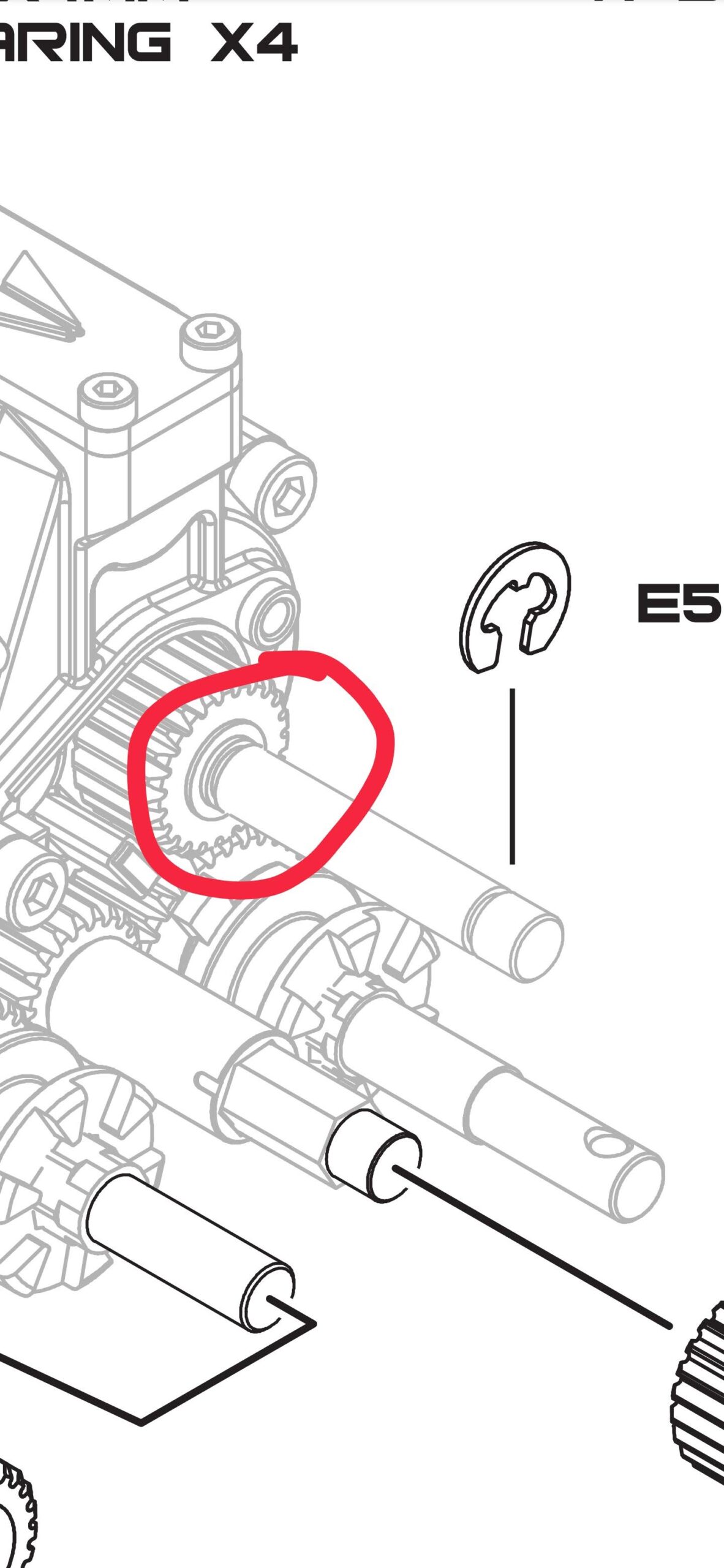
On the Right Track
Manual errors aside, the other issue I had was with the lack of explanation around the wheel adapters that came with the model. That is, it came with narrow and wider adapters that affect the track of the vehicle. The wider adapters mean the wheels are further sideways out from the axles, and vice versa with the narrow ones.
There was no explanation in the manual as to which adapters to use and why – and I can appreciate that VP have left the option in to give people choice, which is good! But for those new to the platform, some guidance in the manual would have been appreciated. As you’ll see in follow-up videos I’ve created since my initial review, your choice of adapter makes a real difference to the capability of this model! Even just a line of explanation for each adapter type in the manual could help builders to make an informed decision.
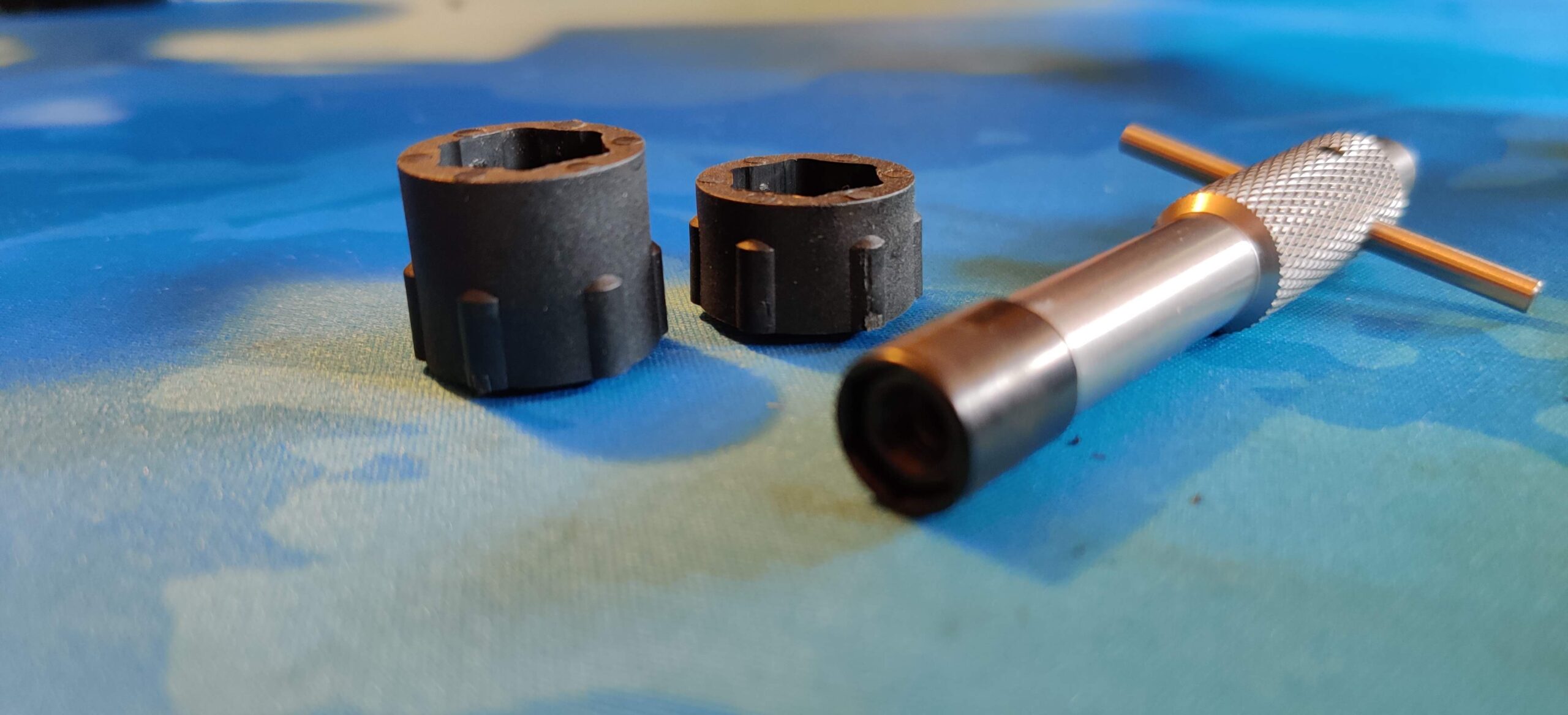
Vanquish VS4-10 Phoenix Shafts
While we’re discussing rotating parts, the drive shafts are plastic, with metal ends. They look like they’ll stand up to whatever punishment a powerful motor can dish out. I have no concerns about their strength or durability at this stage. At time of writing, I have several hours of driving under my belt already – and it wasn’t easy, laid-back driving. I’ve pushed the Vanquish VS4-10 Phoenix to its limits (and beyond) on 3S power. It may have failed often to complete problems, but nothing broke!
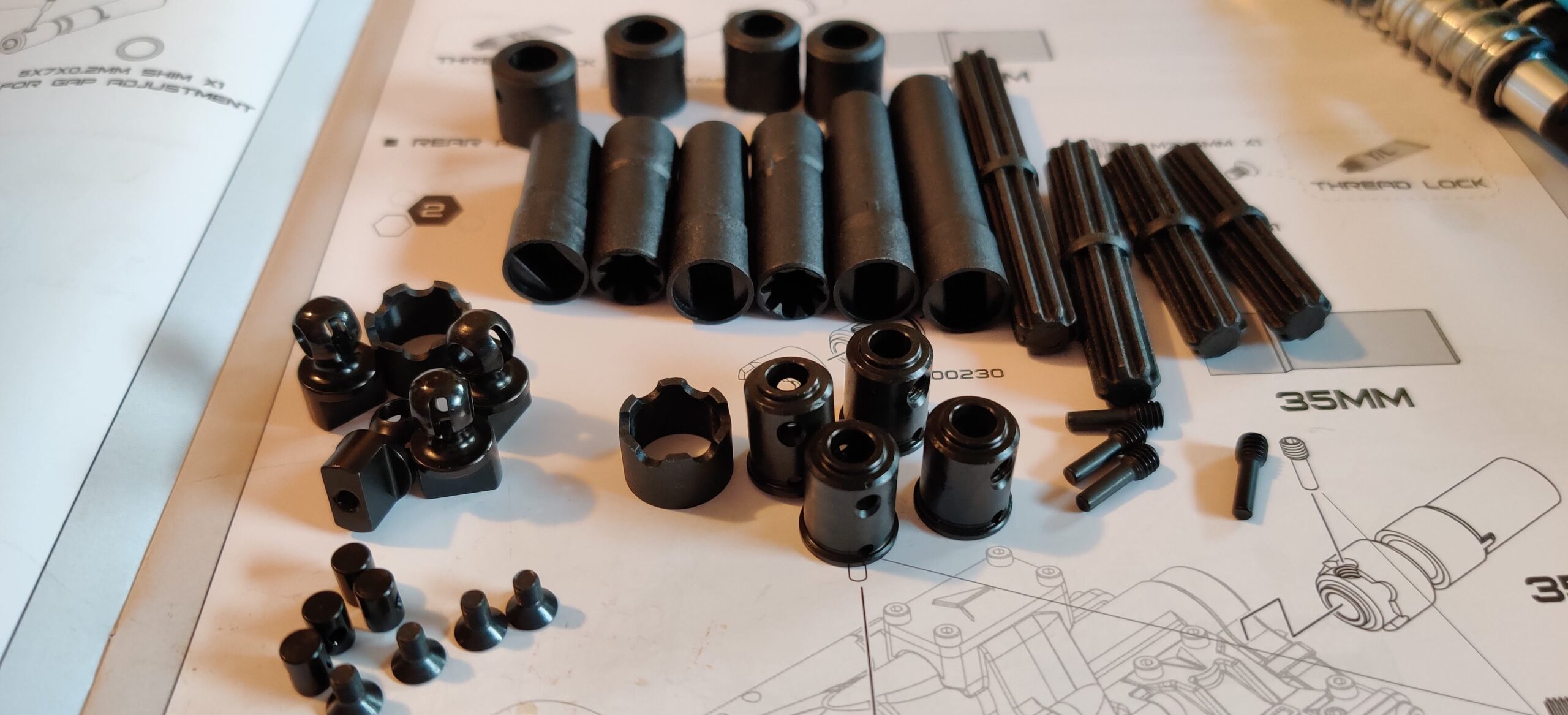
Vanquish VS4-10 Phoenix on the Rocks
Here’s where the rubber meets the, er, rocks. With all the reinforced and durable metals, rails, parts and pieces, this machine promises to be a beast on the rocks. The body is relatively high, yes, but it is narrow and not hugely heavy. The wide stance and high clearance from the F10 portal axles, along with the overdrive, suggest this may be unstoppable on rock problems that stump lesser crawlers.
Well, not so much.
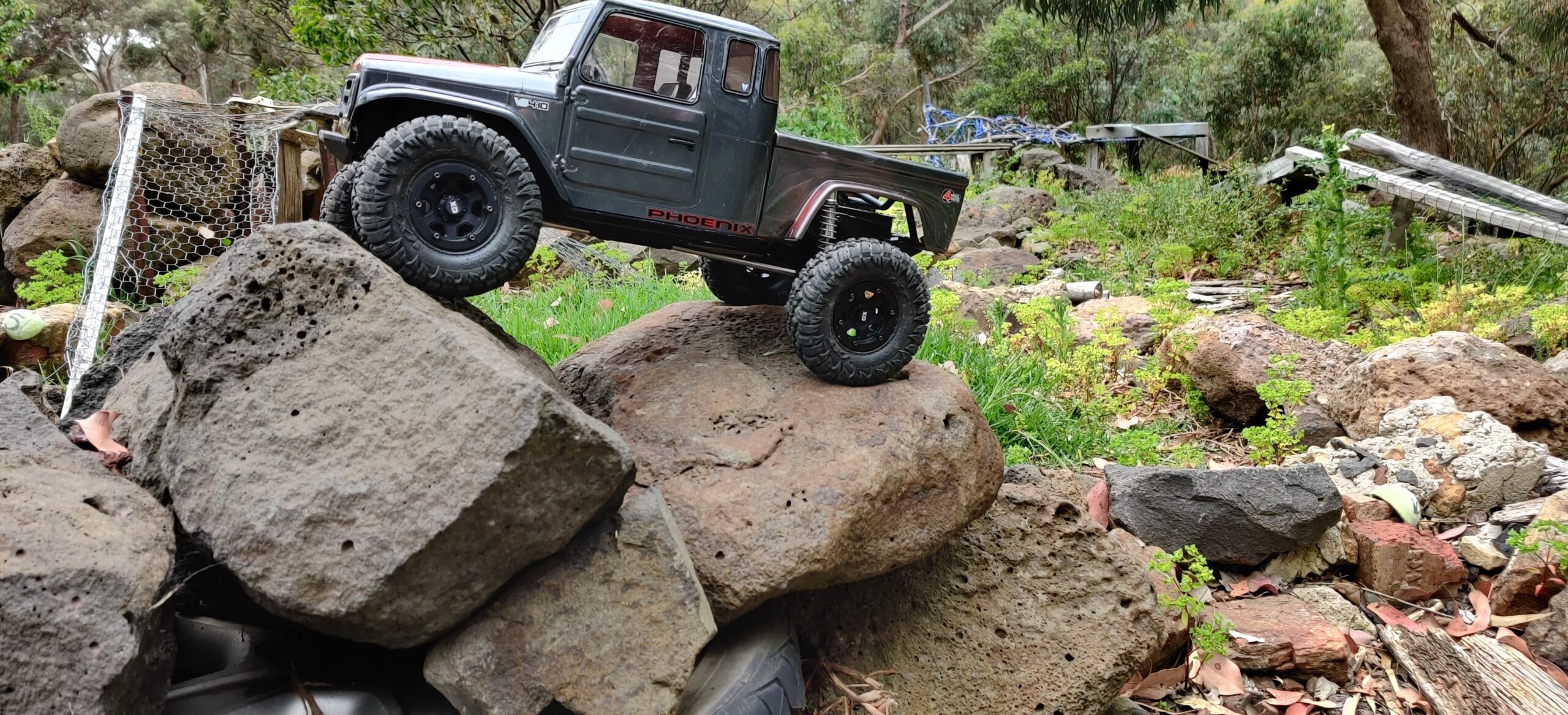
Our Test Course
If you’re not familiar with how we test RC rock crawlers, we have a course that challenges any 4x4 RC crawler in many ways:
- Approach and departure angle: these are challenged on Problems 2 and 3;
- Side-hill ability: tested on Problems 1, 3 and 5;
- Breakover (skid clearance): tested on Problems 4 and 6;
- Suspension articulation and centre of gravity: challenged on problems 2 and 5; and lastly,
- A punishing ascent on problem 6 tests all of balance, break-over, articulation, tire traction and approach and departure angles.
Put together, we have a gnarly, challenging set of problems that challenge all crawlers. If a rig can conquer 3 or more of them, chances are you have a reasonably high-performance rock crawler. There are some machines that can claim all success on all six in stock form – but not many!
Vanquish VS4-10 Phoenix Testing
When I built the model, I used narrow wheel adapters on the rear and wider adapters on the front. This was purely personal preference and the manual gives no indication which to use or why. My thinking was to try for some stability in the front whilst keeping the rear narrow to help with tight turns in the rough stuff. Unconventional, yes – but there is merit to this approach and I’ve used and seen this approach used on crawlers at the national and even world championship level of competition. Every configuration has its advantages and drawbacks, so I figured I’d start here and see how we went.

Wide Front, Narrow Rear
With the Vanquish VS4-10 Phoenix on the 6-problem test course, initial testing was hit and miss. Wide front and narrow rear track saw the rig struggle to complete problem 1, then it also managed problems 2, 3 and 5. Completing four of six is impressive, yes, but these are arguably the easier of the six and with the lengthy and impressive spec list for this machine, I really was expecting at least five of six!
Narrow Front, Narrow Rear
I changed the front adapters to the narrow set, making front and rear track uniformly narrow. This brought the wheels back in and partly under the wheel wells. This is a more scale look and on road and trail, might make more sense. Certainly, it increases the pumpkin clearance potential, as the closer together your wheels, the less chance there is for undercarriage and diffs to be caught on obstacles from beneath.
Narrow front and rear testing resulted in worse performance in this case, if you can believe it! We only completed problems 2 and 5. Two out of six! That’s worse than even the cheap RGT 136100 V2 we tested recently, and it cost around a quarter of the total the Vanquish VS4-10 Phoenix cost to buy and finish! Clearly, narrow track isn’t ideal for rock crawling! I made a video about this attempt, if you’d like more detail – see below.
Wide Rear, Narrow Front
Intending to try wide front and rear, it seemed prudent to try a wide rear only, first, leaving the front narrow – for science. Interestingly, we had the best results so far, and a bonus effect I wasn’t expecting: the vehicle could now right itself using steering and throttle. This was something I couldn’t manage in the other configurations so far. Also, the vehicle managed five of the six problems! It still struggled in places other crawlers don’t – but it finished problem 6, which is a Big Deal.
The biggest issue remained with break-over angle. That is, the angle between the wheels and the skid plate – that centre high point under the chassis. Problem 4 has several sharp rocks that require careful driving to clear, but despite great and repeated effort, I just couldn’t get the Phoenix to clear them.
Wide Rear, Wide Front
With the wider adapters fitted to front and rear of the vehicle, the Vanquish VS4-10 Phoenix was a different machine. More stable on side-hilling, more able to reposition without tumbling, more sure on steep stuff. We did only finish five of six problems (problem 4 remains a challenge), but it took half the attempts and was much easier on the vehicle. Here’s a video that rounds up the results we had from this configuration – and it’s the one I’d recommend for anyone planning to crawl with this vehicle. While it wasn’t a perfect six, we did get the best results so here’s the main takeaway: use the wide adapters on the VS4-10. With its geometry, wider just works better.
Body Issues
It’s worth noting at this point that the body was really started to get ragged in places. The top-rear corners of the vehicle cab are heavily scuffed and there’s a crack already on the left rear corner window. When this thing falls, it falls hard. The body will not last a long time if used as a rock crawler – I’m only 3 sessions in with this thing since new, so far, and already it looks just as beat up as a year-old daily driver. That is fairly disappointing.
I haven’t installed LEDs in the front and rear light buckets that come with this pretty body. It’s a lovely shell, well designed, but watching it get so scuffed and cracked in the course of testing that most crawlers go through without huge damage was demoralising. If you’re considering this vehicle, keep in mind it isn’t a dedicated rock crawler so much a fancy and assuredly high-quality all-rounder. With that in mind, you’ll enjoy this rig very much.
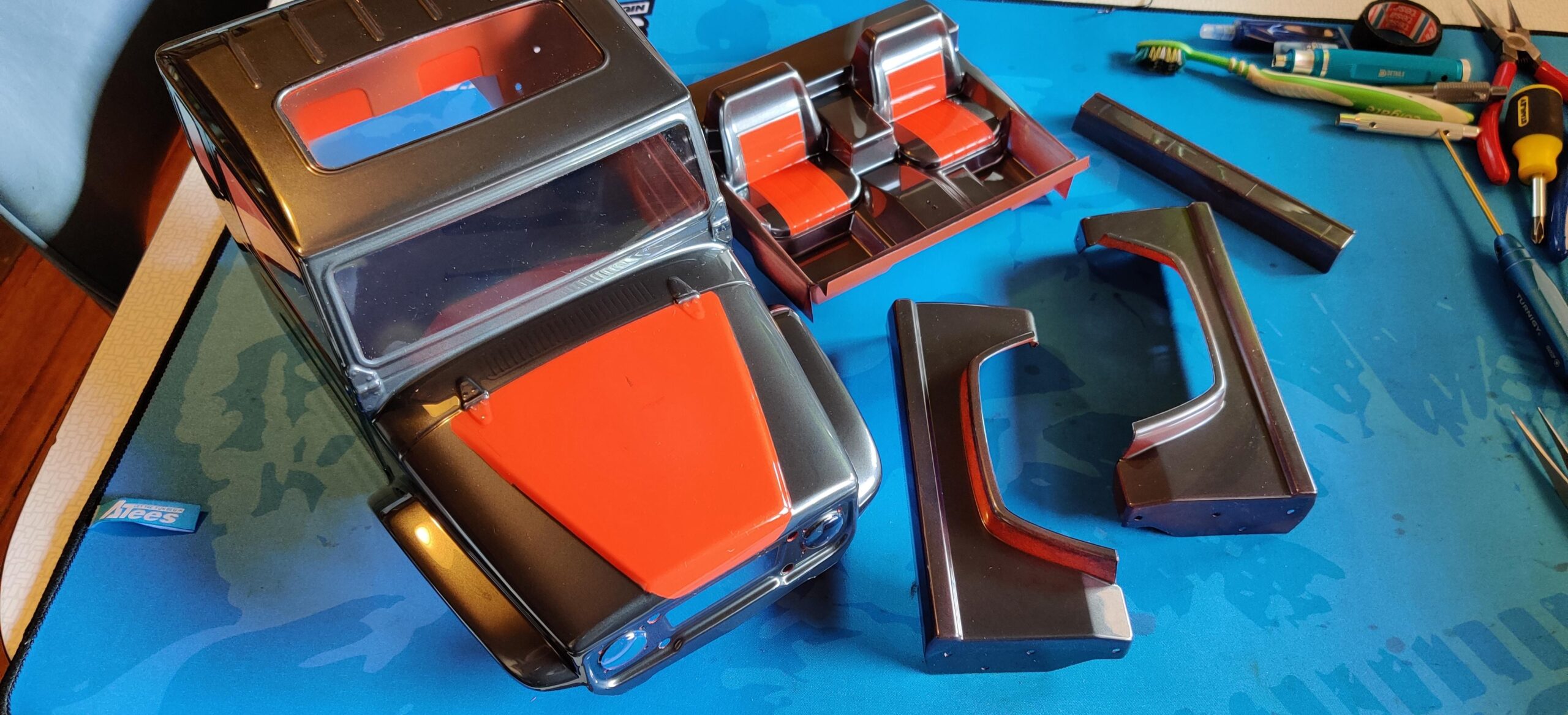
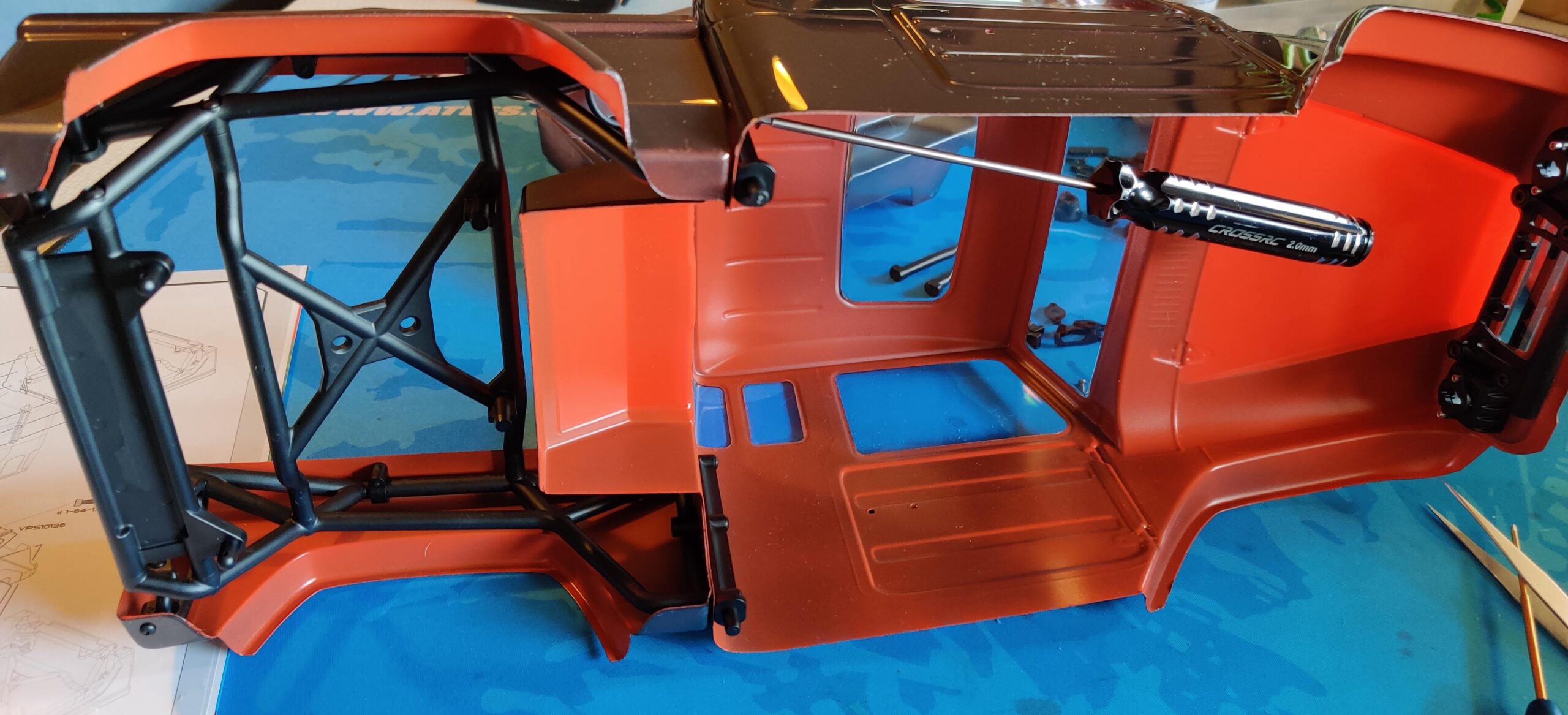


On The Trail
With a solid axle in front, the Vanquish VS4-10 Phoenix will not be as stable or nimble as anything with IFS. However, being able to at least free-wheel the front axle from the transmission, if you install the servo for the overdrive side of the VFD Twin Transmission, you’ll having something of a fun trail basher.
This is a single-speed machine and it won’t go fast enough to be satisfying as a dedicated trail rig unless you gear it up enough that it’ll adversely affect its low-speed crawling ability. Using a brushless system and 3S rather than 2S battery power, you may be able to find a happy medium. In this case, I’d recommend a 2500kv to 3000kv 540 brushless motor and the stock gearing, running on 3S. It won’t be ideal, as lower kv would be better for crawling and higher for trail driving, but as a compromise, you’ll likely find the above specs a good match here.
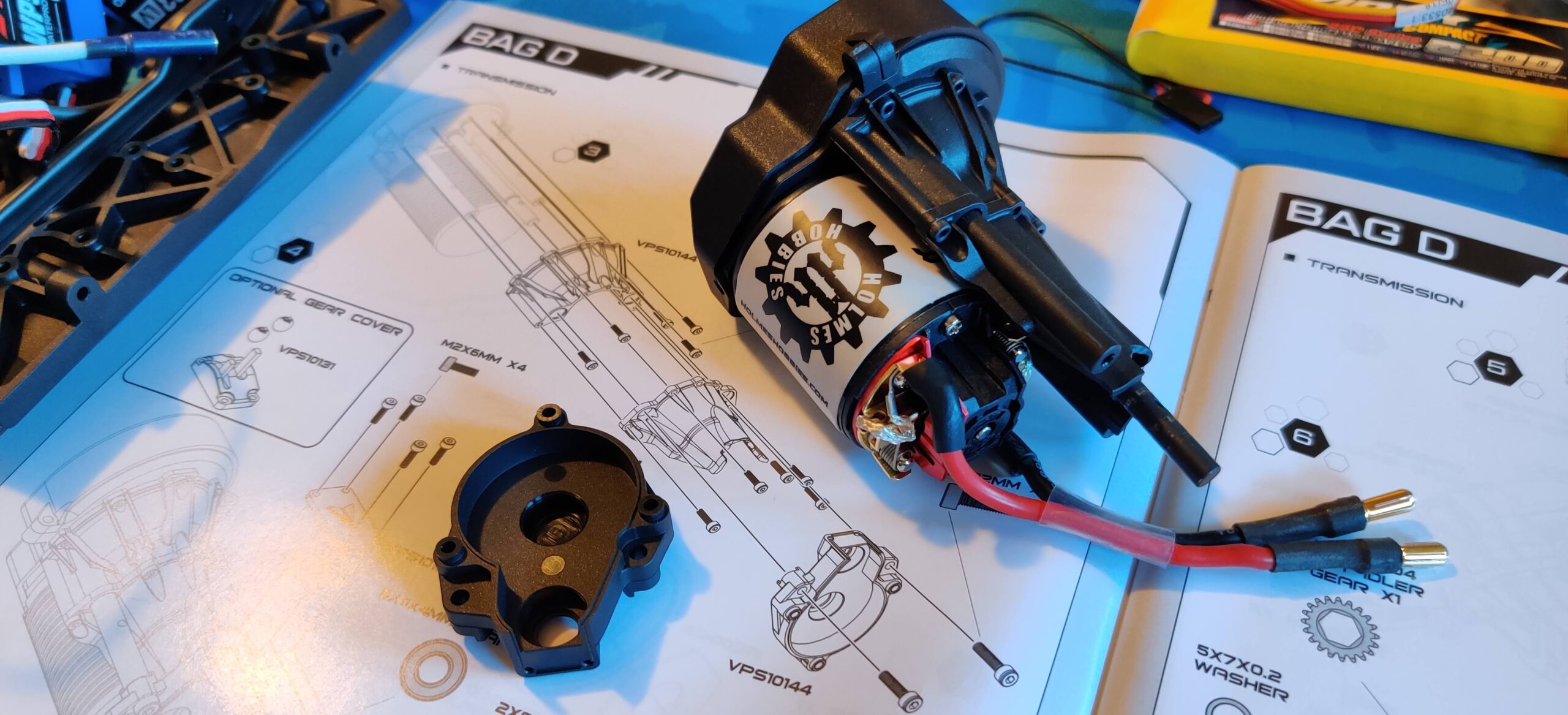
Trying Tires
Where performance is concerned, very often the key lies in the rubber under a vehicle. The Vanquish VS4-10 Phoenix is no different. On this model, the tires are thinner than typical for a 1/10 scale vehicle. They look great and have sufficient stiffness to maintain shape even under high wear.
However, these tires are too hard around the outer edges. They don’t conform enough to enable the kind of grip one might hope for on challenging rock problems. On the trail, they’re perfect. The thinner profile means lower rolling resistance and they don’t press ‘flat’ onto the ground, helping keep motor temps down and runtimes longer.
On the rocks, these tires need some modification to unlock their potential. At time of publishing, I haven’t made this video yet, but it’s Coming Soon – that is, we’re going to try cutting a thin groove in each lug of the tires on both sides with a thin rotary cutting disc. The idea will be to soften the lugs up a bit, to help the tire carcass conform better to rock shapes. This will theoretically help the vehicle overcome challenges that currently stop it. Stay tuned for that, I’ll edit in an update once this has been done (Jan 2022: see below for the tire test video!).
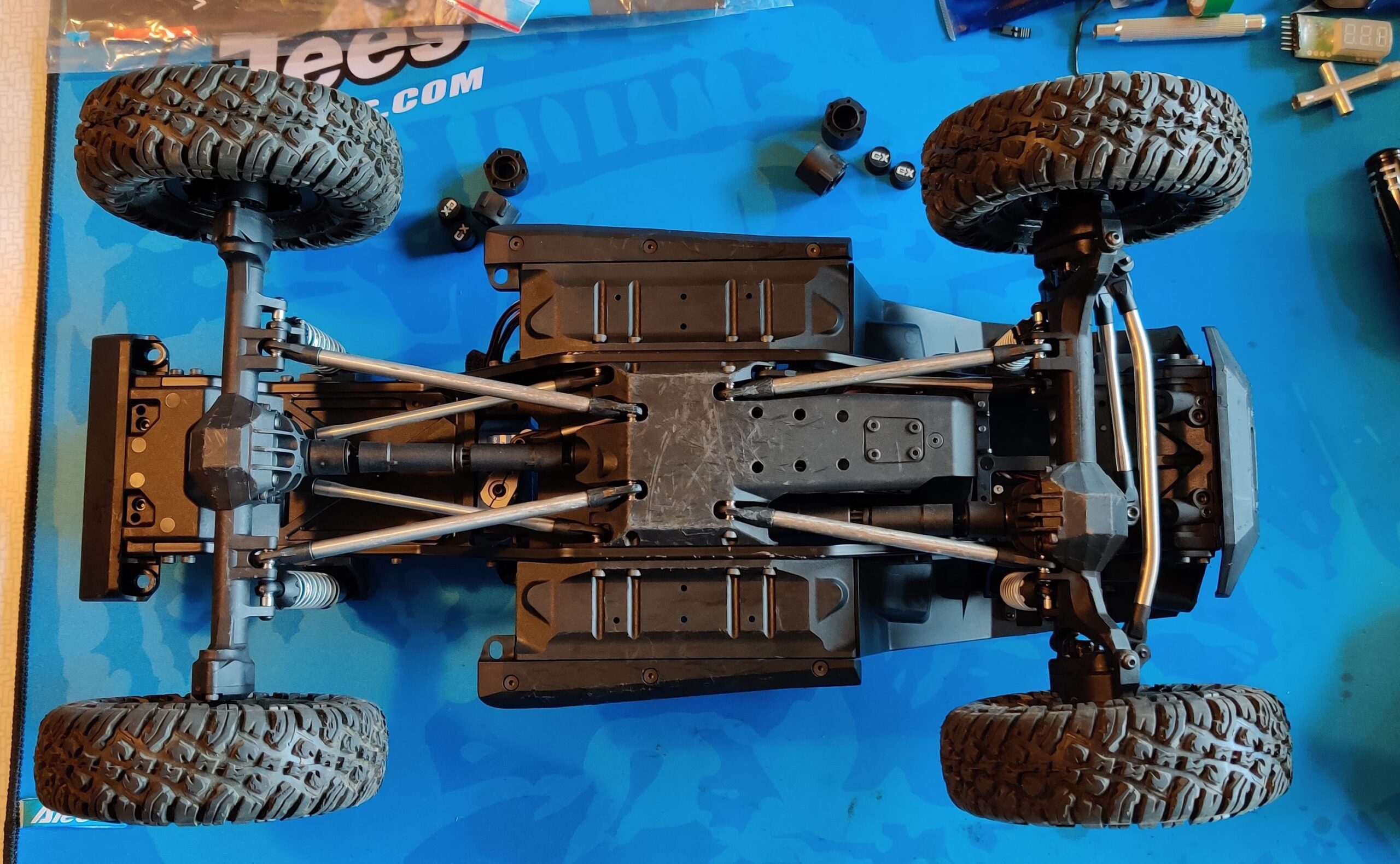
The Wheel World
A minor annoyance is that the axles on this vehicle are thicker than is typical (5mm rather than 4mm). This means regular 1.9” wheels often won’t fit (some do), though the 12mm hex nuts are standard. Instead, if you want to try different tires, they’ll need to be fitted to the supplied plastic bead lock wheels. Alternatively, you could drill out the center of your alloy wheels to the larger 5mm diameter or you may be lucky and find a set with the bigger axle hole! There may be some aftermarket wheel options (such as these), but for my kit, if I swap the tires I’ll be doing it with the stock bead locks. This isn’t a deal-breaker, but it is a bit annoying!
The supplied Incision KMC KM233 Hex Beadlock wheels are pretty and well designed. It’s just a shame 6mm output shafts aren’t the more common 5mm size.
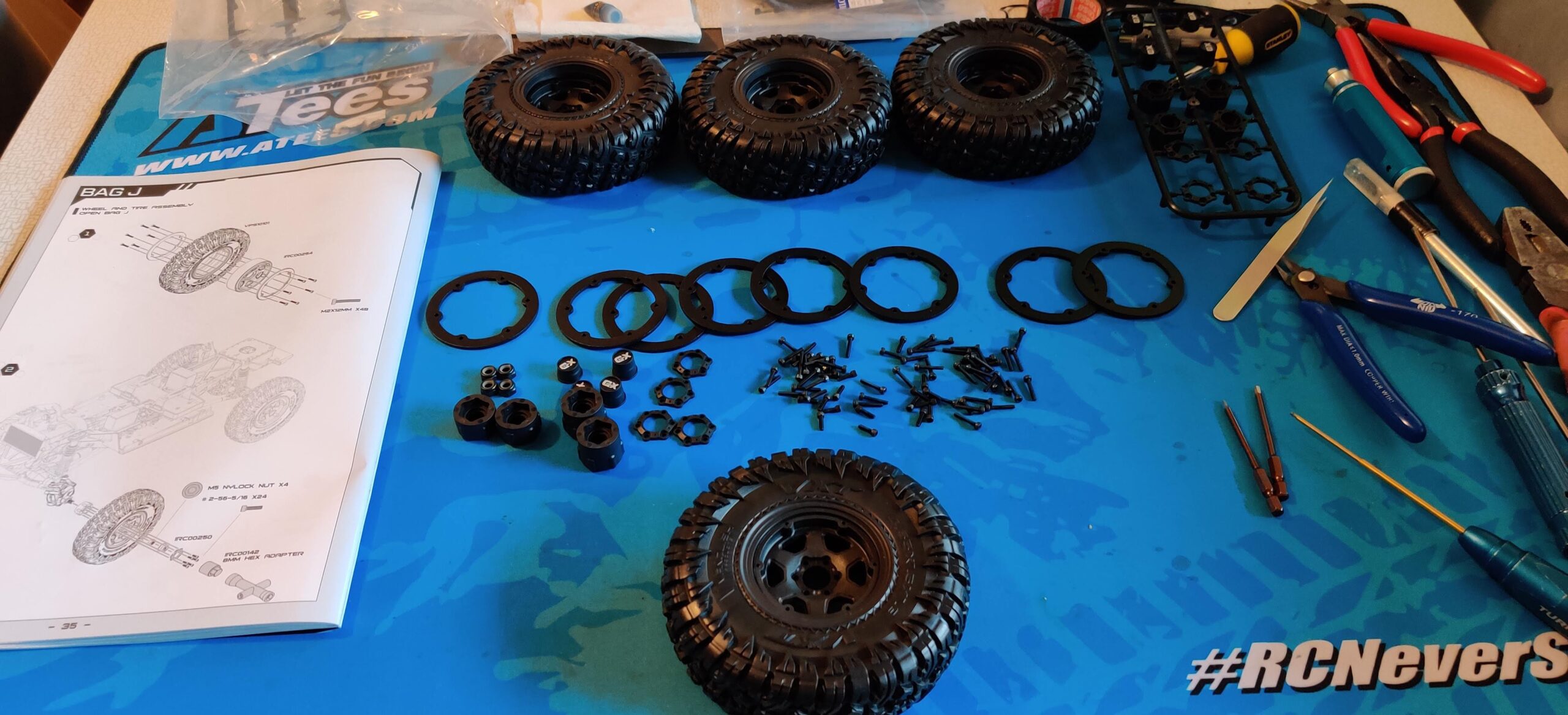
Recommendation
Should you buy the Vanquish VS4-10 Phoenix Portal kit? Maybe:
Yes, definitely, if you appreciate loving workmanship, design and premium kits. This model is still a member of the VP family and quality is evident throughout. The VFD Twin Transmission is a solid performer (once you work out how to assemble it!!) and it’s fun to play with the shifting servos as you drive with it. The body is gorgeous and the vehicle just has a special feel to it.
However, if you’re looking for a rock crawler that can mix it up with the other big names in crawling, I’d caution you to look closely at its limits before you buy. It can be improved on the rocks but it’ll never be as slick on the trails as the Element RC Knightrunner (with its IFS system) or as the Cross RC EMO AT4 and/or the TRX4 Defender/Bronco/Blazer, with their unlockable diffs and nigh-indestructible two-speed transmissions. The Sendero HD would be an example of a truly capable and affordable RTR crawler with transmission-based overdrive, at the cheaper end of big-name options.
It should be noted here that although these other models may outdo the Vanquish VS4-10 Phoenix on the trail or on the rocks, you’ll be hard-pressed to find any other model in this price-range that will be as durable, with the single possible exception of the TRX4. Maybe. The VP rig is truly sturdy.
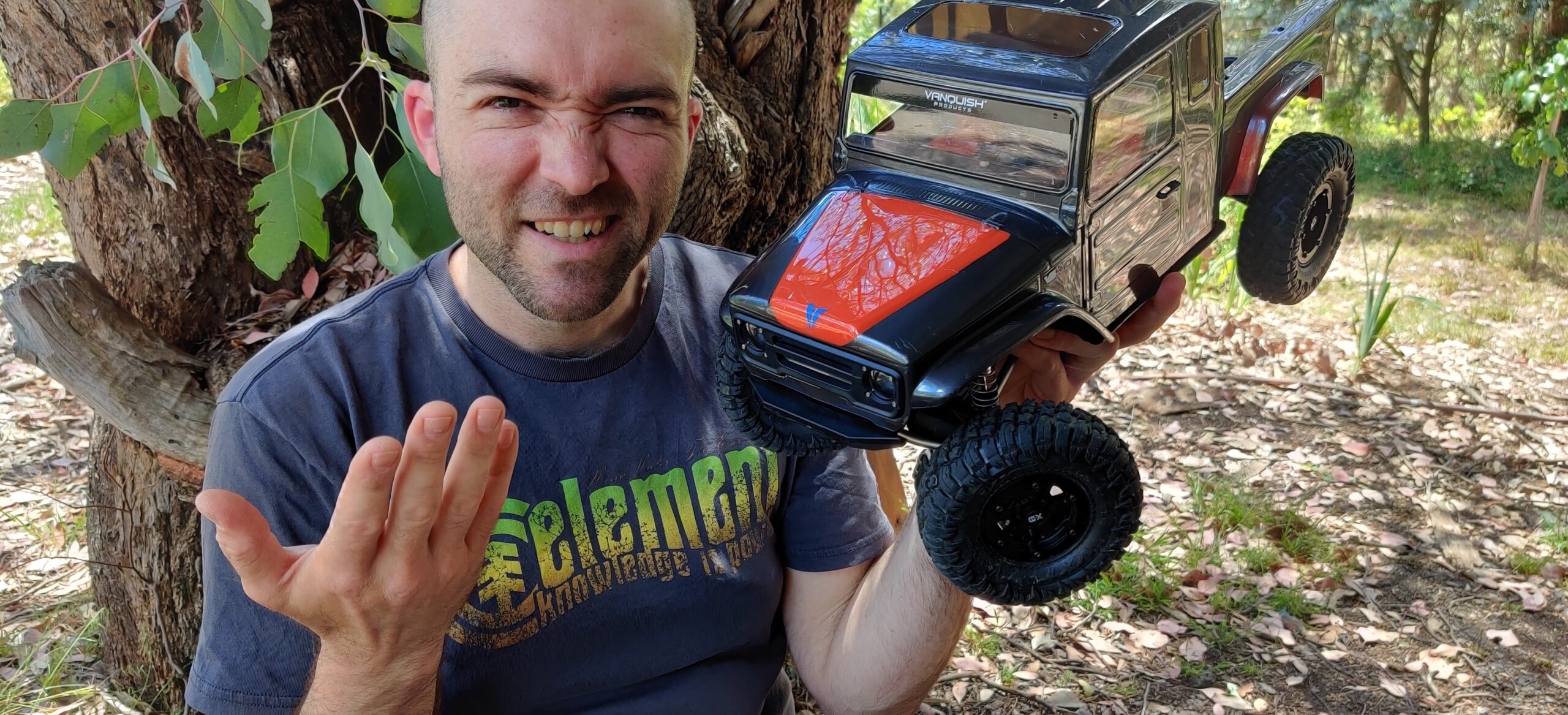
Closing Thoughts
As a jack of all trades, the Vanquish VS4-10 Phoenix Portal does everything reasonably well. There are better choices for the rocks and for the trail, but for the unique factor and for overall quality at a moderate price, this is still a lovely, special vehicle. If reliability and durability are high on your priorities, this may be the best general-use vehicle for you.
Check out our video review for more!
Specifications
- 1/10th Scale
- VXT 4.65” 1.9” tires
- 25:1 Axle Gear Ratio
- 15T Pinion
- 52T Spur Gear
- Overall Width: 250mm (9.84″)
- Overall height: 250mm (9.84″)
- Wheelbase: 313mm (12.3″)
- Overall Front Ratio (Standard 6.5% OD): 53.7:1
- Overall Front Ratio (High 33% OD): 41.1:1
- Overall Rear Ratio: 57.2:1
- Average RTR weight (can vary with electronics): 6.5lbs (2.9kg)
- Front axle width pin to pin: 190mm (7.5″)
- Rear axle width pin to pin: 188mm (7.35″)
INCLUDES:
- Threadlock
- Grease
- 30wt Shock Oil
REQUIRED ELECTRONICS:
- ESC
- 540 Motor
- Steering Servo (Vanquish 20mm servo horn recommended)
- Battery
- Transmitter and Receiver
ADDITIONAL ELECTRONICS FOR VFD TWIN FUNCTIONALITY:
- X2 Standard size servos for Dig and Selectable Overdrive (Standard or Low Profile)
- X2 24mm servo horns
- 4 Channel Transmitter and Receiver
More Info
Vanquish Products webpage for the VS4-10 Phoenix Portal: https://www.vanquishproducts.com/vs4-10-phoenix-portal/
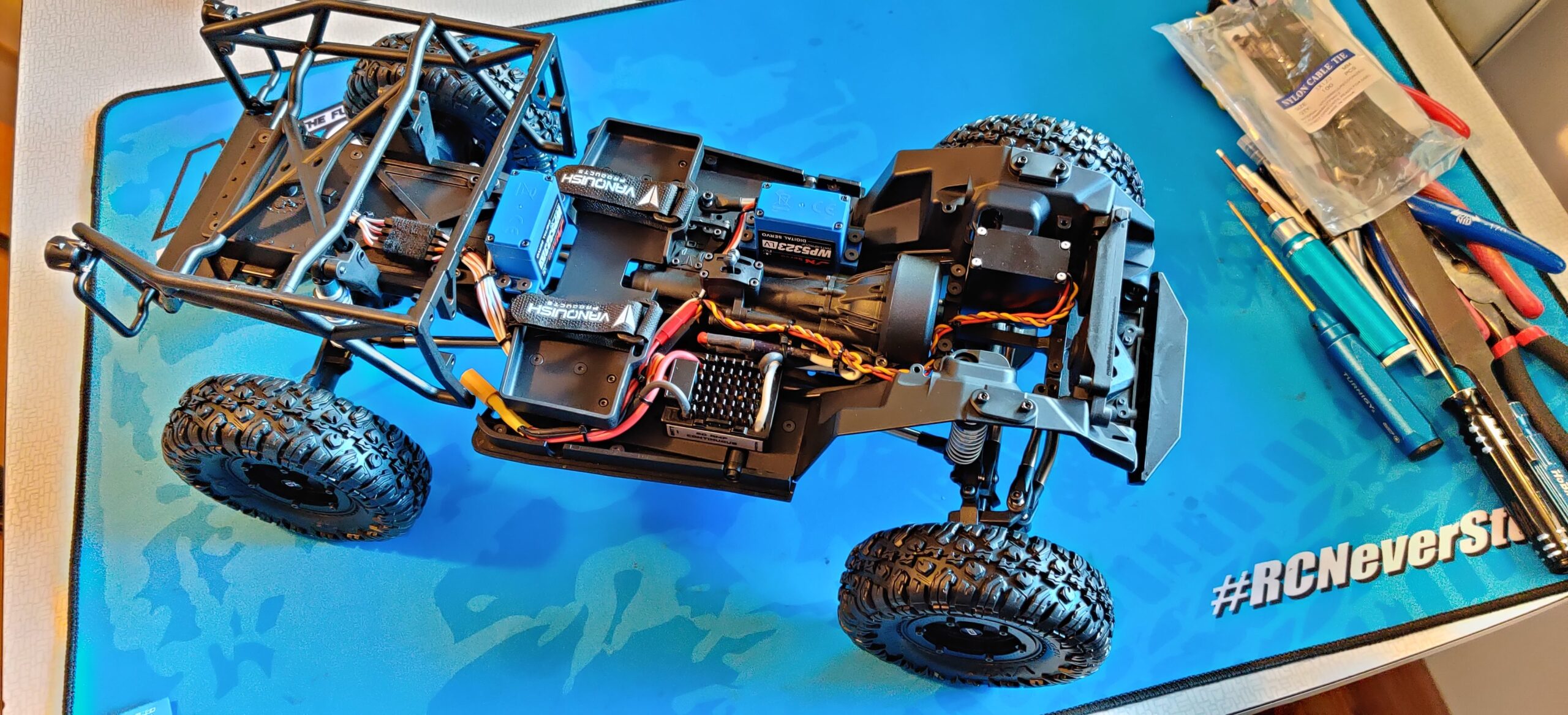

Craig Veness
RC-TNT
Craig has been into radio control since the 90s and into RC crawling since about 2010, when a Losi MRC started the obsession! Now it’s all rocks this and crawl that and upgrade all the things! …You know how it is, right? Welcome home 🙂

